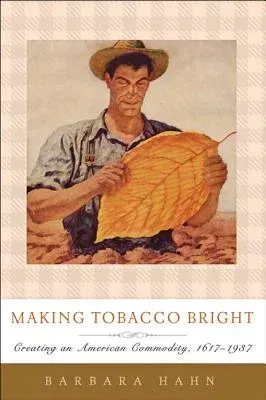How did Bright Flue-Cured Tobacco come to dominate the industry?
In her sweeping history of the American tobacco industry, Barbara Hahn
traces the emergence of the tobacco plant's many varietal types, arguing
that they are products not of nature but of economic relations and
continued and intense market regulation.
Hahn focuses her study on the most popular of these varieties, Bright
Flue-Cured Tobacco. First grown in the inland Piedmont along the
Virginia-North Carolina border, Bright Tobacco now grows all over the
world, primarily because of its unique--and easily
replicated--cultivation and curing methods. Hahn traces the evolution of
technologies in a variety of regulatory and cultural environments to
reconstruct how Bright Tobacco became, and remains to this day, a
leading commodity in the global tobacco industry.
This study asks not what effect tobacco had on the world market, but how
that market shaped tobacco into types that served specific purposes and
became distinguishable from one another more by technologies of
production than genetics. In so doing, it explores the intersection of
crossbreeding, tobacco-raising technology, changing popular demand,
attempts at regulation, and sheer marketing ingenuity during the heyday
of the American tobacco industry.
Combining economic theory with the history of technology, Making
Tobacco Bright revises several narratives in American history, from
colonial staple-crop agriculture to the origins of the tobacco industry
to the rise of identity politics in the twentieth century.

